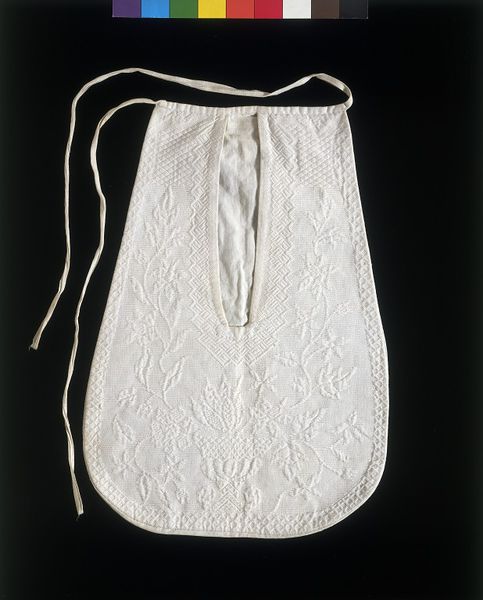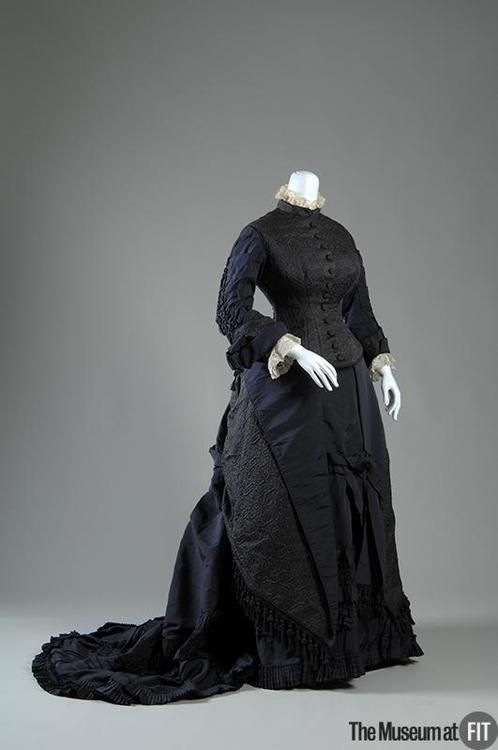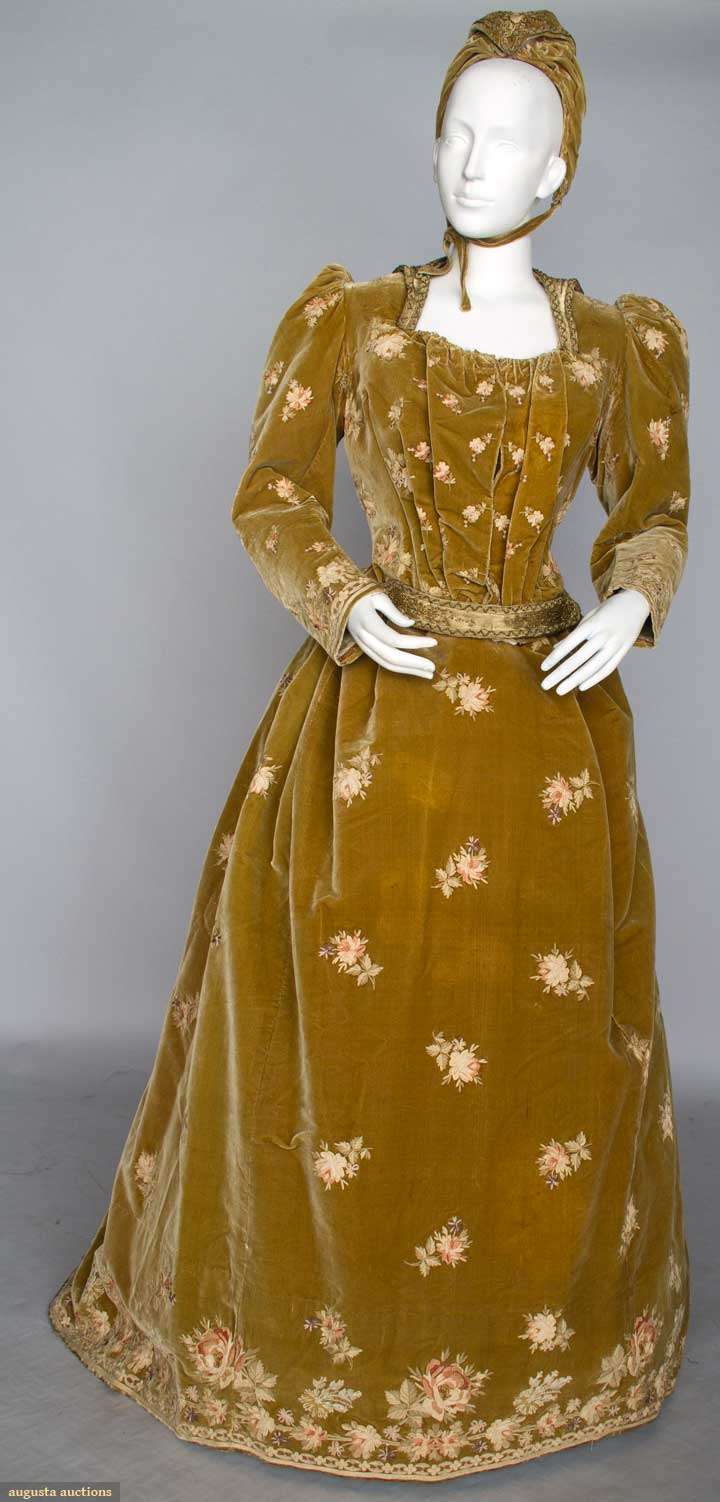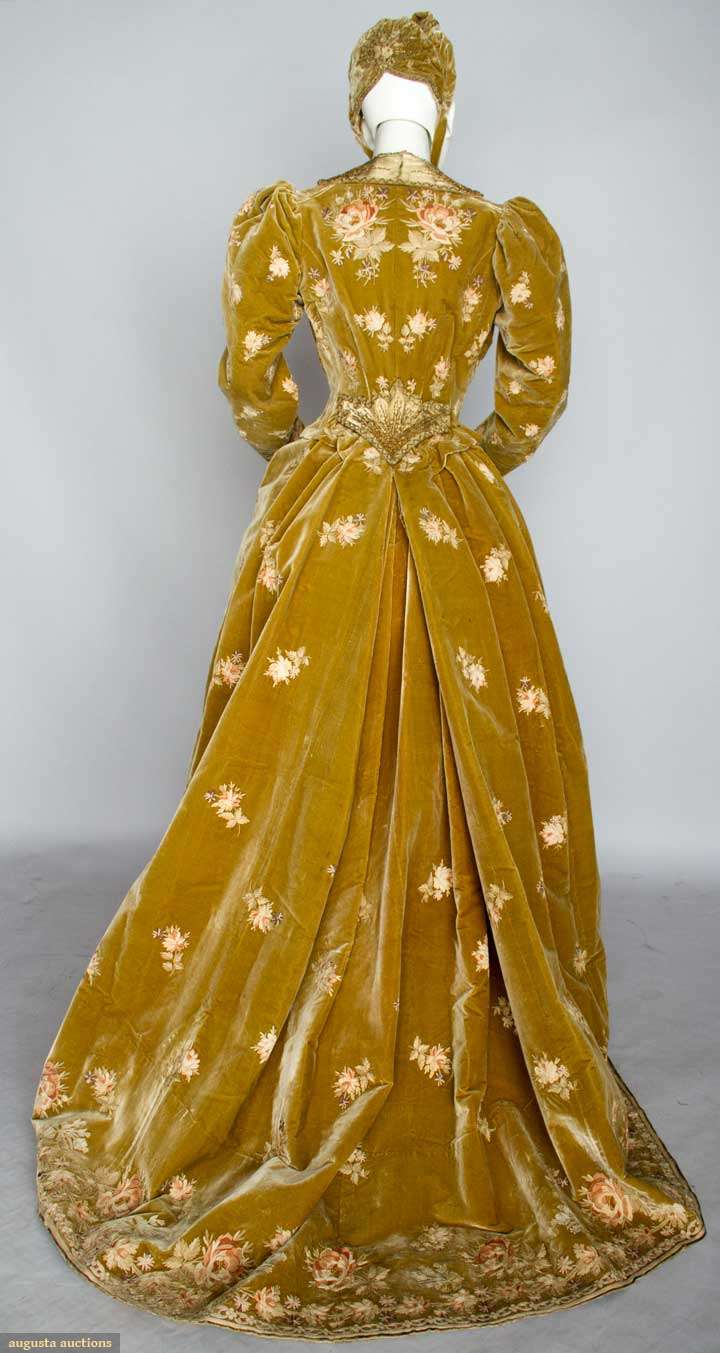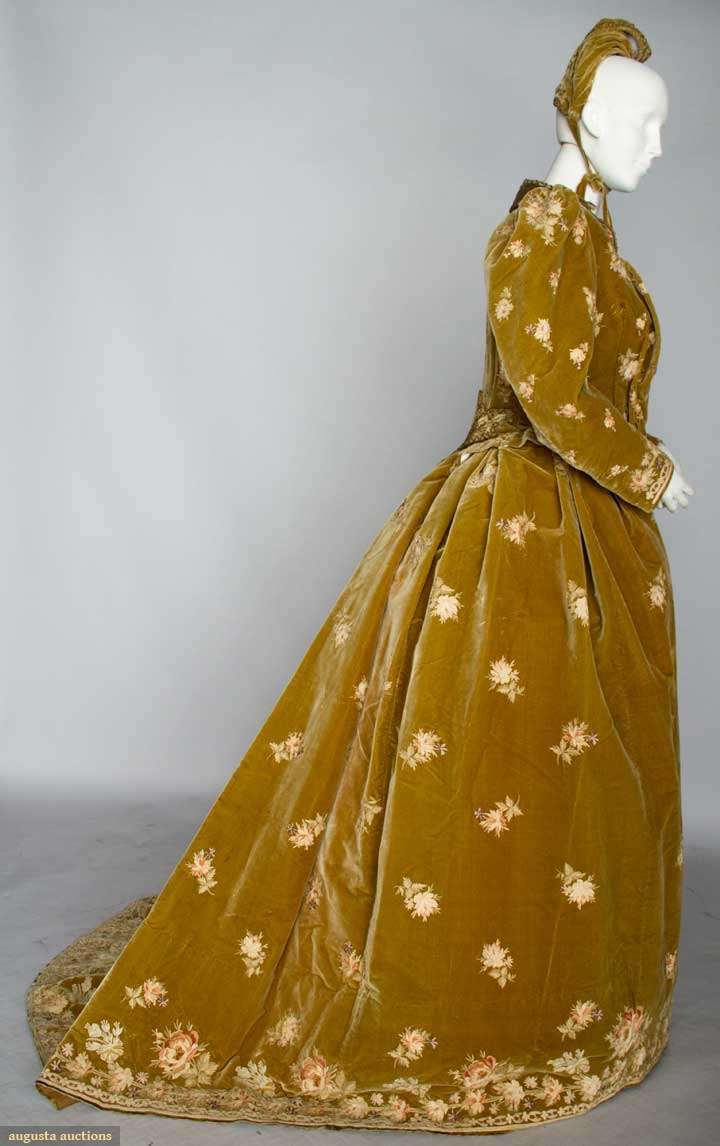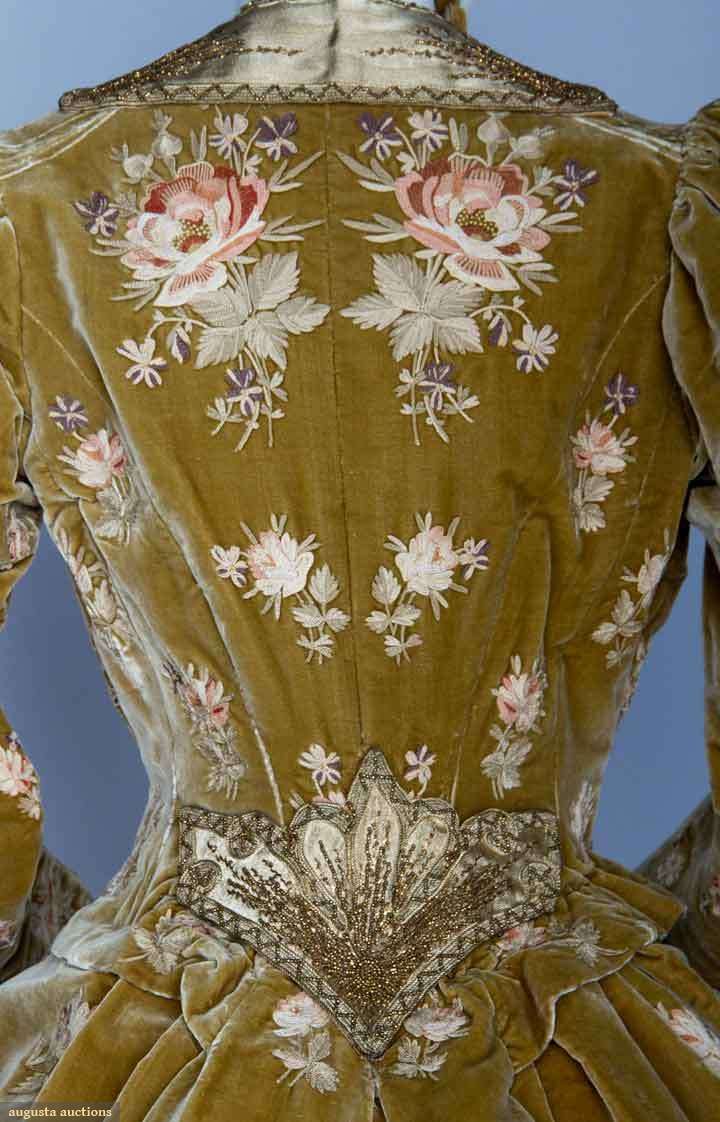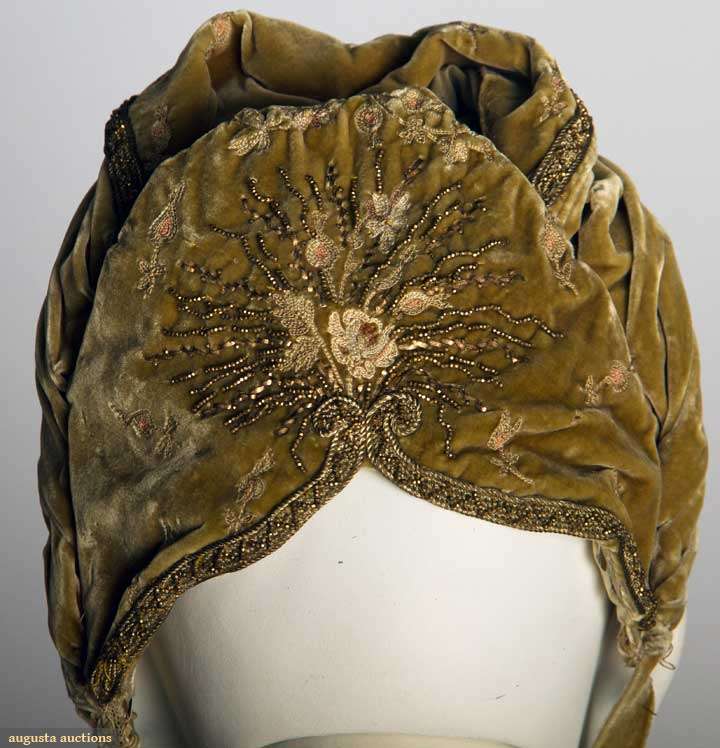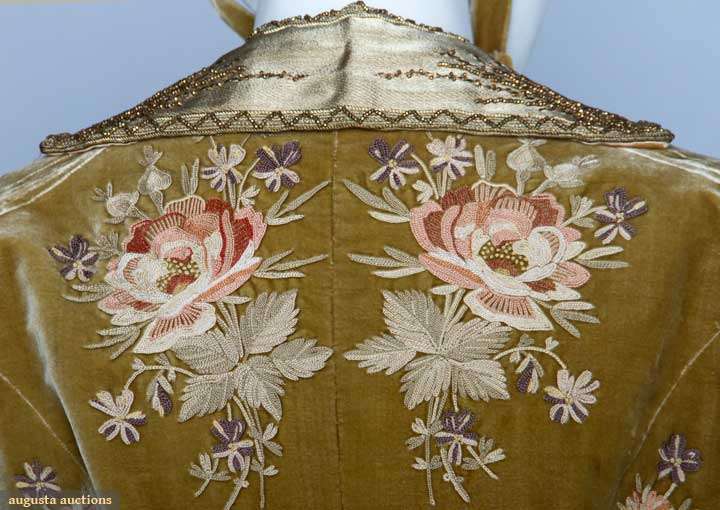As I’ve just finished a matelasse waistcoat, it’s high time I (finally) finished my matelasse terminology post and added the term to the Great Historical Fashion & Textile Glossary!

Matelasse or Marseille’s cloth (sometimes shortened to marcella or called pique de marseilles) is also known as woven quilting, because it is a weave specifically designed to imitate quilting. It looks like a fine quilt, or like a slightly bubbly, blister-y brocade. Matelasse is sometimes patterned in simple geometrics, or (like my waistcoat), in elaborate foliate designs. It can range from a heavy, bulky fabric, to a fairly light but still puffy and squishy crepe. A very similar fabric (sometimes sold as matelasse, and it’s difficult to tell the difference on some examples), is cloque.
From a technical standpoint:
Matelasse is a figured fabric made with either three or four sets of yarns. Two of the sets are the regular warp and weft yarns; the other sets are crepe or coarse cotton yarns. They are woven together so that the yarn sets crisscross. When the fabric is finished the crepe or cotton yards shrink, giving the fabric a puckered appearance. Heavy cotton yarns sometimes are used as stuffer yarns beneath the fabric to emphasise the three-dimensional appearance of the fabric…Cloque is made of four sets of yarns: two warp yarn sets and two weft yarn sets. The interlacing pattern is complex and simulates the appearance of quilting stitches on a solid coloured surface. Since there is no shrinkage of some of the yarn sets as in matelasse, cloque is a flatter fabric.
In the early 18th century quilted petticoats (along with other quilted items such as waistcoats, banyans and pockets) were hugely popular, and Marseilles in France was particularly famous for its quilting, especially of what would come to be known as whitework or trapunto quilting. England, always eager to promote British made goods and to discourage importation, sought to control the importation of the quilts through taxation and import restrictions. Various societies and manufacturers also offered rewards to anyone who could come up with an alternative to Marseille’s quilting. In the early 1740s one Robert Elsden invented a technique for imitating the hand-quilted look on a loom. He was immediately awarded a prize by the Society for the Encouragement of Arts, Manufacture & Commerce.*
Elsden’s technique was probably quite rudimentar, because it was not until the 1760s that woven quilting became commercially available, probably after much refining to the technique to make it workable and viable. Capitalising on the fame of Marseilles’ quilting, the cloth was sold in England as ‘Marseilles cloth’, and soon became extremely popular. Merchants in England and the American colonies could choose from dozens of patterns, sent out in samples books, some of which still exist in museums. The fabric was sold for bedcovers, petticoats, waistcoats, and even in special designs for small items such as pockets.
In 1783 the SEAMC congratulated themselves on the success of the fabric their reward had supported:
When the proposition was first made in the Society, of offering a premium to encourage the making in the loom, an imitation of that Species of Needlework, long known by the name of Marseilles Quilting, it was almost rejected as visionary and impossible; but the laudable spirit of enterprise, which has always distinguished the Society, determined them to publish the premium, and the consequence has justified the venture. The manufacture is now so thoroughly established and so extensive, being wrought in all the different materials of Linen, Woolen, Cotton, and Silk, that few persons of any rank, condition, or fix……exist who do not use it in some part of their clothing”
18th century Marseilles cloth consisted of two layers of fabric woven together, with the patterns defined by cord. As the Societies advertisement stated, it could be made in silk, cotton, wool or linen, though most varieties, and silk in particular, were more decorative than durable, so few early examples survive.
While the English called the fabric Marseille’s cloth, the French did not want it to compete with their prized hand quilting, so they took a name from the French matelasser – to quilt, hence the modern matelasse.
Marseille cloth disappeared from fashion in the early-mid 19th century, though it remained popular for bedspreads and furnishing. There are a few reasons why matelasse fell out of fashion. First, the fullness that matelasse would give to skirts was no longer desirable with the slim Regency silhouette. Second, lighter, simpler, less bulky fabrics were fashionable for the first few years of the 19th century. In addition, the line between underclothes and outerclothes became more distinct in the early 19th century, especially where petticoats were concerned. Because petticoats were no longer interchangeable with skirts, expensive decorative petticoats fell out of favour, and fabrics associated with petticoats became undergarment only fabrics, rather than general fashion fabrics.
Finally, fabric manufacturing methods were revolutionised by the invention of the jacquard loom (yes, I’ll be doing a post on that!) in 1801. Today matelasse is usually made on a jacquard loom, but I’ve not been able to determine when the jacquard loom was first used for the manufacture of matelasse. It probably took some time to adapt the jacquard to the matelasse weave, so matelasse was eclipsed in popularity by other previously expensive fabrics like brocade that could be cheaply (or at least less expensively) be produced by a jacquard loom.
So for the first half (and a bit) of the 19th century, matelasse was quite rare as a fashion fabric . When examples of it are shown in fashion magazines, they make it quite clear that the reader would not be familar with the fabric. It was seen as a fabric for bedcovers, and for the occasional petticoat, like this example from the Metropolitan Museum of Art, with a cotton matelasse hem which would help to bulk and smooth out an elliptical hoopskirt:
Jacquard manufacture of matelasse may not have happened until the early 1870s, when the fabric reappeared in fashion in a big way: being mentioned in dozens of fashion articles in late 1874. It was marketed under the name matelasse in both English and French speaking countries, showing the French dominance of fashion, and a clear break with the link to quilting that had made it so popular in the 18th century.
A fashion column of autumn 1874 describes the fabric and the types of styles made from it, and makes it clear that most women would not be familiar with matelasse as a fabric for clothing:
a novel fabric, which is matelasse. It is silk with a satin face, and as thick as though it were wadded. It is woven to look like fanciful quilting in small diamonds, arabesques and floriate designs. It is made in black, olive green, chestnut brown and a variety of other colours; in fact, matelasse jackets, polonaises, and skirts will be all the rage when colder days arrive. In pale pink, blue and white the material will be mainly used for skirts for wearing under trained evening or dinner dresses.
Another fashion article of the same period also describes matelasse in great detail:
The new curiasse, however, the tight bodice, with closely fitted basques, is to be made of fabrics specially manufactured for it, and called matelasse. These fabrics are very thick and firm, and will set closely to the figure like cloth. They are generally made with a background of wool, and perhaps a little cotton, but in some entirely of silk. The more modest specimens are what we might term silk pique, and have geometric patterns upon them. A more elegant style is covered in handsome designs worked in the stuff itself, that looks as if it were embroidered upon it, and is really one of the most effective materials I have seen for a long time.
Matelasse remained fashionable throughout the rest of the 19th century, though after the 1870s it was used primarily in capes and other items of outerwear.
Examples of matelasse as a fashion fabric are reasonably rare (though certainly not unknown) in the early 20th century. By 1923 fashion papers described it as ‘a rather old fashioned weave’, though there was an attempt to reintroduce it (or a type of cloque, as the fabrics were often confused) as ‘Cloky‘ (an unattractive re-naming if I ever heard one, and one which thankfully did not take!) After a few decades as an unusual fabric, matelasse experienced a resurgence of fashion in the 1930s, especially as lightweight matelasse crepes in silk and rayon.
It was once again at the forefront of fashion in the 1960s, when bulky matelasse brocades, often in the new synthetic fibres, lent themselves well to the stiff, sculptural silhouttes – just as they had as ‘quilted’ petticoats when the fabric was first developed.

Evening dress, Paris, France, ca. 1955, Givenchy, Silk matelasse brocade, Victoria & Albert Museum, T.270 to B-1975
*well, that covers pretty much everything
Sources:
Maitra, K. Encyclopaedic Dictionary of Clothing and Textiles. New Delhi: Mittal Publications. 2007
O’Hara, Georgina. The Encyclopedia of Fashion: From 1840 to the 1980s. London: Thames and Hudson Ltd. 1986
Peck, Amelia. American Quilts and Coverlets in the Metropolitan Museum of Art. New York: Dutton Studio Books. 1990
Rowe, T (ed.) Interior Textiles: Design and Development. Cambridge: Woodhead Publishing Limited. 2009
Shaeffer, Claire. Claire Shaeffer’s Fabric Sewing Guide. Iola, Wisconsin: Krause Publications. 2008

